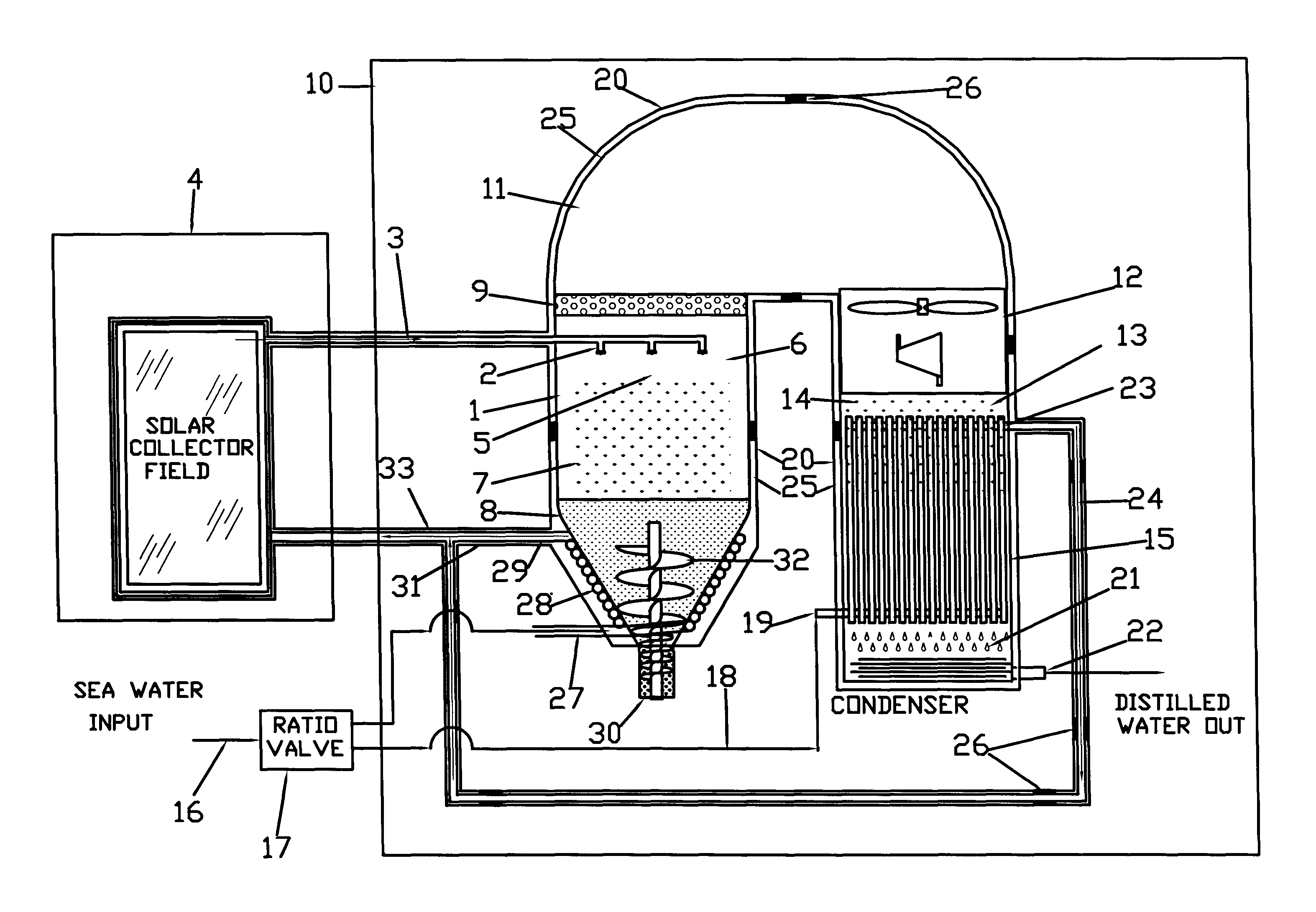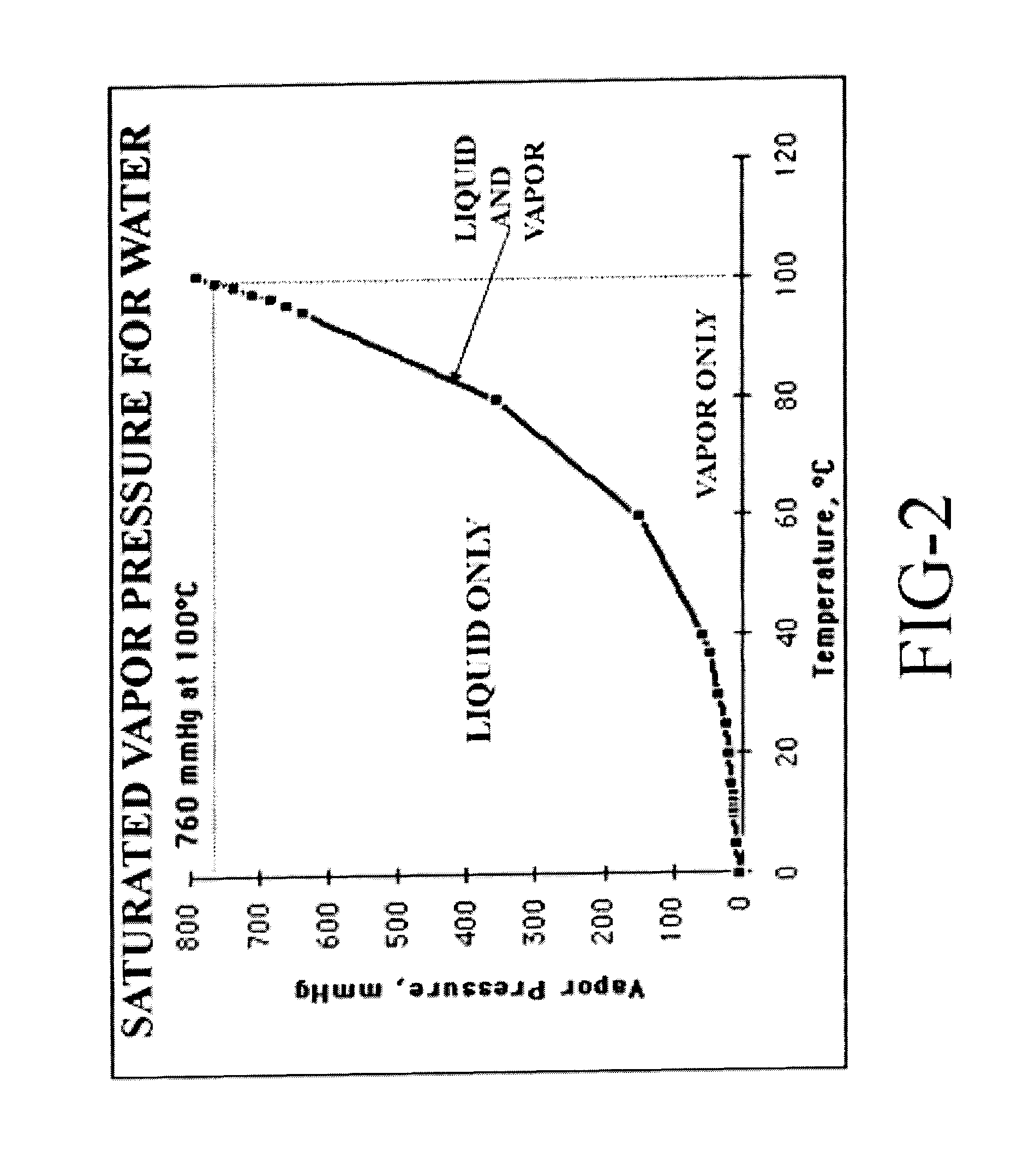Large scale insulated desalination system
a desalination system and large-scale technology, applied in vacuum distillation separation, separation processes, vessel construction, etc., to achieve the effects of reducing the overall energy requirement, low conductive and convection heat loss, and increasing the efficiency of distillation
- Summary
- Abstract
- Description
- Claims
- Application Information
AI Technical Summary
Benefits of technology
Problems solved by technology
Method used
Image
Examples
Embodiment Construction
[0083]Referring to the drawings, FIG. 1 is a representative view of the preferred embodiment of the desalination system 10 showing all of the basic assemblies and plumbing surrounded by a secondary wall 20. The space 25 between the assemblies and the secondary wall 20 is under low partial vacuum, between 0.001 and 1 Torr (0.1333 to 133.3 pascal), thereby maintaining very low conductive and convection heat loss. The space 25 can be partially or totally filled with an insulation material 26 for structural support. Perlite is used for the structural support in the preferred embodiments as it exhibits a thermal conductivity of 0.031 W / m*K that improves to 0.00137 W / m*K under partial vacuum.
[0084]Still referring to FIG. 1, the assemblies include an evaporation chamber 1 that houses a plurality of spray nozzles 2 being fed heated input sea water 3 from an external water heater source 4. The preferred external water heater source 4 comprises a solar collector 34 (see FIG. 3), although foss...
PUM
| Property | Measurement | Unit |
|---|---|---|
| temperature | aaaaa | aaaaa |
| operating temperatures | aaaaa | aaaaa |
| operating temperatures | aaaaa | aaaaa |
Abstract
Description
Claims
Application Information
 Login to View More
Login to View More - R&D
- Intellectual Property
- Life Sciences
- Materials
- Tech Scout
- Unparalleled Data Quality
- Higher Quality Content
- 60% Fewer Hallucinations
Browse by: Latest US Patents, China's latest patents, Technical Efficacy Thesaurus, Application Domain, Technology Topic, Popular Technical Reports.
© 2025 PatSnap. All rights reserved.Legal|Privacy policy|Modern Slavery Act Transparency Statement|Sitemap|About US| Contact US: help@patsnap.com



